Despite Unity of Purpose, Familiar Schisms Appear As California Lawmakers Rekindle Clean Water Funding Debate
Three options on are the table for helping water utilities deliver clean water.

Evilia Robles, inspects her drinking water at her home in Alpaugh in this photo taken in November 2013. The small farmworker community in California’s Central Valley suffers from high levels of arsenic and other contaminates in its water. With $3 million in state funding, the Alpaugh Community Services District is building an arsenic treatment plant, scheduled for completion in 2020. Photo © Matt Black for Circle of Blue
By Brett Walton, Circle of Blue
- Despite the evident unity of purpose, has anything changed in the last five months that would push a clean drinking water funding bill past the finish line?
- Players and options have shifted — and the changes start at the top
- More than 510 water systems regulated by California are either currently out of compliance with state or federal drinking water systems or were out of compliance within the last seven years
Nearly everyone who gathered at the California Assembly committee meeting on Wednesday to discuss safe, affordable drinking water agreed that the state needed swift and substantial action to remedy an inequality that has persisted for decades.
Lawmakers and public officials, worried citizens and utility representatives, as well as environmental justice organizers recited similar statistics about the depth and breadth of a crisis in which one million or more California residents do not have reliable, clean drinking water.
“We should bear some shame in not having adequately addressed this to this point,” remarked Richard Bloom, an assembly member who represents wealthy communities northwest of Los Angeles, including Malibu and Santa Monica. California passed a law in 2012 proclaiming that clean, affordable water is a human right.
The issue of safe drinking water – affordable drinking water – is top of mind.” — Gov. Gavin Newsom
What lawmakers and advocates did not agree on in the three-hour hearing is the source of funding to meet these objectives. Inability to resolve the question Who will pay? sunk legislation in 2018. Familiar schisms that opened last year appeared again in the committee chambers. Which prompts the question: despite the evident unity of purpose, has anything changed in the last five months that would push a funding bill past the finish line?
“That’s a complicated question,” Jonathan Nelson, a policy adviser at Community Water Center, a clean drinking water group, told Circle of Blue after the February 6 hearing. “We’re still figuring that out.”
New Players, New Options, Same Goal
Nelson and others said they are still figuring it out because the players and options have shifted — and the changes start at the top.
Jerry Brown is no longer governor. Gavin Newsom, a Democrat, was elected in November, and immediately vaulted safe drinking water high on his political agenda. Four days after being sworn in, he took his Cabinet to a Central Valley community with chronically bad water.
“The issue of safe drinking water — affordable drinking water — is top of mind,” Newsom said on January 11 while visiting Monterey Park Tract, an unincorporated community of about 44 homes near Ceres. He touted a $193 million budget request for a clean drinking water fund. All the Legislature needs to do is create it.
“I don’t to overpromise here, but we cannot continue to under-deliver to communities like this and thousands of others across the state,” Newsom said.
More than 510 water systems regulated by the state are either currently out of compliance with state or federal drinking water systems or were out of compliance within the last seven years, according to the State Water Resources Control Board. An unknown number of very small systems, those serving fewer than 15 connections, and private wells, which are not regulated, also deliver water contaminated by nitrates, arsenic, chromium-6, uranium, or a host of other undesirable mixers, some from natural sources and some discharged by people and industry.
Newsom supports what is known as the Clean Water Fund, which is backed by social justice organizations like Community Water Center and the state’s big farm groups. It is the same proposal that failed last year.
Money would be raised from two sources: a monthly 95-cent fee on residential water bills and a fertilizer tax that farms and dairies would pay. Households below 200 percent of the federal poverty line would be exempt from the fee.
The goal is to raise about $140 million a year, with roughly $100 million coming from the water bill fee. The money would fill a gap in the state’s aid programs. Voter-approved bonds and federal dollars are usually exclusively for capital projects.
The Clean Water Fund would instead help with administrative costs, fixing leaks, financial planning, staffing, and other operations and maintenance costs for small utilities in poor communities. The State Water Board would determine the size of payments and their recipients.
Newsom is on board with the fee, saying in Monterey Park Tract that “it’s the right thing to do.”
Encouraged by leadership from the top, Nelson, after years of working on clean water, is hopeful. “This is not a new issue for us, but it’s new to see this level of attention from both Houses and the administration coming together,” he said.
Problem is, utilities disapprove of the fund’s structure.
Cindy Tuck is deputy executive director of government relations at the Association of California Water Agencies, the state’s largest lobby group for public water utilities. She offers two criticisms of the water bill fee. One is that the state should not tax an essential service. The other is that the tax is, in economic terms, “inefficient.” In other words, reconfiguring billing systems and verifying who is exempt would cost too much.
“In some cases, a utility might pay more to implement the tax than the revenue coming in,” Tuck claimed. A utility representative at the hearing who had run numbers for his system said that the fee might bring in $160,000 while costing $100,000 to administer.
ACWA, the California Municipal Utilities Association, and Eastern Municipal Water District counter with a dual-track proposal. Instead of placing fees on ratepayers and farmers, they envision a trust fund seeded with a one-time transfer from the state general fund. Due to a sizzling economy, the state is running a surplus of roughly $20 billion. But Newsom has already found a home for most of that money, either paying down debt or a rainy day fund.
How much money the trust fund would require to provide a meaningful return on investment that could then be used for operations and maintenance aid was a point of debate at the hearing, with figures ranging from $1.5 billion from proponents to more than $6 billion from skeptics.
The second part of the package would be a new law allowing the State Water Board to unite small utilities in a regional system. The idea, backers say, is that bigger is better and that restructuring how utilities are managed can prevent throwing money at a system that shouldn’t exist in its current state.
With fewer customers, small utilities that serve only a dozen homes can struggle to raise enough revenue to maintain their systems. Administrative tasks undertaken by each utility could also be merged under a regional system. Some utilities, like the Coachella Valley Water District, said that they are already pursuing a regionalization strategy.
“The nineteenth-century model of hundreds of independent and struggling water systems needs to be challenged,” said Paul Jones, general manager of the Eastern Municipal Water District.
The State Water Board already has the authority to order a larger utility to absorb a nearby, smaller utility that fails to provide clean drinking water to disadvantaged communities.
Will 2019 Be Different?
The third option on the table is new this year. Devon Mathis, a Republican assembly member from Visalia, and his Democratic colleague Eduardo Garcia proposed an amendment to the state Constitution that would designate two percent of general fund revenue for water projects.
Mathis opposes the water bill fee and says that $140 million per year that the Clean Water Fund offers is too stingy. “I don’t think this is enough,” he said. “I think our people deserve a hell of a lot better.”
This early in the legislative session, the hearing amounted to both promise and uncertainty that divisions that proved irreconcilable last legislative session can be overcome.
Similar divisions were apparent during the hearing’s public comment period. Scores of people from across the state queued to address the committee. Most speakers represented one of three constituencies: water utilities, citizens from the Central Valley who would benefit from state action, and environmental groups. The line, which extended out the door and into the hallway, was so long that speaking time was cut from one minute to 15 seconds.
Newsom has said that the debates from last year are over. He’s focused on today.
“I’m not interested in who’s to blame,” Newsom said at Monterey Park Tract. “We’re going to have to fix this. I have no interest in everybody making an excuse of not doing it this year. If we fall short again, that’s on us, that’s a disgrace and that’s shame. So we’re going to have to figure it out.”
Richard Bloom closed out the hearing by saying, “Let this be the year that we resolve this.” It’s a sentiment held by all, but with the path of action still undecided.
Brett writes about agriculture, energy, infrastructure, and the politics and economics of water in the United States. He also writes the Federal Water Tap, Circle of Blue’s weekly digest of U.S. government water news. He is the winner of two Society of Environmental Journalists reporting awards, one of the top honors in American environmental journalism: first place for explanatory reporting for a series on septic system pollution in the United States(2016) and third place for beat reporting in a small market (2014). He received the Sierra Club’s Distinguished Service Award in 2018. Brett lives in Seattle, where he hikes the mountains and bakes pies. Contact Brett Walton



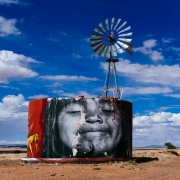
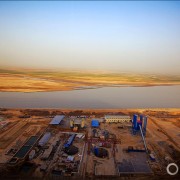
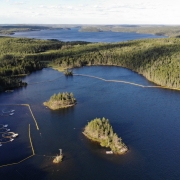
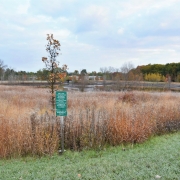
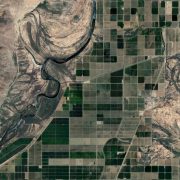




We can best protect our limited water supplies by making polluters pay for the cost of clean-up. If polluters pay double, that might be a useful disincentive to pollution. Taxes should be assessed by the state on oil and gas production and other mining operations in the state. The regional units of the SWRCB should also be watching for pollution sources at oil and gas exploration and production sites assessing damages for harmful content in produced water released or stored at the surface or injected back into the ground. Damages should be fully assessed for the damage to aquifers and to surface water based on the full cost of making that full volume of water potable. Chemical releases from mines, current or past, should be similarly assessed for environmental and health impacts with general damages, not already collected, charged to those past and current operations. Only by billing the cost of bad behavior to the perpetrators can we modify that behavior, or end it, and cure the problems created.